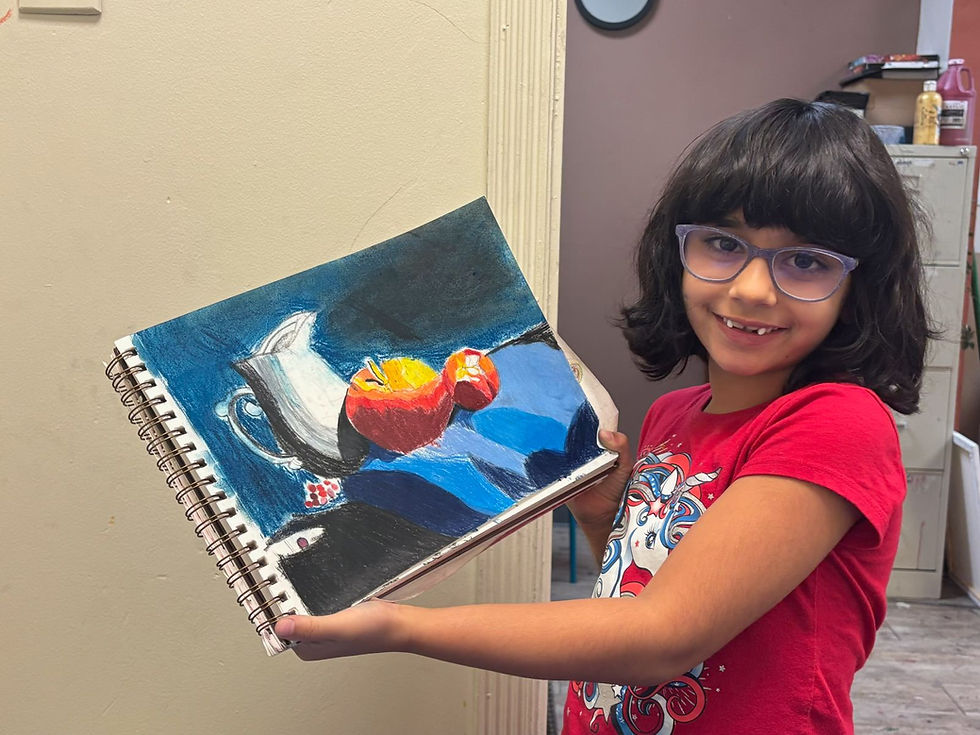How Art Education Transforms Students: The Psychological Benefits of Creativity
- Nisha Shah
- Sep 13
- 2 min read

In today’s fast-paced, screen-driven world, parents are constantly looking for meaningful activities that support their child’s growth. While academics and sports often take the spotlight, one powerful tool for shaping a child’s mind and emotional well-being is art education.
At Falak Art Studio, we’ve seen firsthand how structured, curriculum-based art programs can nurture not only technical skills but also mental and emotional development. Backed by psychology, here’s why art education is one of the most impactful investments parents can make.
1. Art Boosts Confidence & Self-Esteem
When children create art, they’re not just painting or sculpting—they’re expressing their individuality. Each completed artwork gives them a sense of achievement. Psychologists suggest that small wins in creativity build confidence that often extends into academics and social life.

At our studio, parents often share how shy children gradually become more expressive and proud of their work after joining art classes.
2. Art Strengthens Emotional Intelligence
Colors, lines, and shapes often communicate what words cannot. Through art, children learn to identify and manage emotions, both their own and others’. Studies show that creative expression improves emotional regulation and empathy, skills essential for navigating relationships and real-world challenges.
⸻
3. Enhances Focus & Patience
In a world of short attention spans, art requires students to slow down, observe details, and practice patience. Activities like shading, blending colors, or sculpting clay demand sustained focus, improving concentration that benefits other academic subjects too.
⸻
4. Encourages Problem-Solving & Innovation
Art education is not just about following instructions—it’s about thinking outside the box. Psychologists agree that creative problem-solving enhances cognitive flexibility, helping children adapt to challenges in school and beyond.
For example, when a student’s drawing doesn’t go as planned, they learn to reimagine it, turning mistakes into masterpieces. This mindset carries into life: resilience and adaptability.
⸻
5. Reduces Stress & Builds Mental Resilience
Art is therapeutic. It provides a safe outlet for children to release stress and express feelings they may not yet know how to articulate. Studies in child psychology confirm that creative activities lower cortisol levels, promoting relaxation and mental resilience.
⸻
6. Fosters Community & Collaboration
Group art sessions teach students to share ideas, appreciate different perspectives, and work together. This sense of belonging is especially important for kids navigating school pressures or social transitions.

Why Choose Falak Art Studio?
At Falak Art Studio, our programs combine structured art education with the freedom of creative exploration. With expert teachers and a nurturing environment, we focus on both artistic growth and psychological well-being. Every student gets personal attention, ensuring they don’t just learn techniques but also build life skills that extend far beyond the canvas.
Give Your Child the Gift of Art
Art isn’t just an extracurricular activity—it’s a foundation for confidence, creativity, and mental well-being. Whether your child is a budding Picasso or simply loves doodling, art education can transform the way they see themselves and the world around them.
📩 Enroll today at Falak Art Studio and let your child experience the psychological and educational benefits of art.
👉 Follow us on Instagram & Facebook to see how our students are thriving creatively and emotionally.




Comments